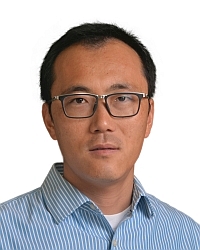TR2017-032
Optimal Array Beamforming for Microwave Power Transmission in Complex Environment
-
- , Optimal Array Beamforming for Microwave Power Transmission in Complex Environment, DOI: 10.1007/978-3-319-46810-5_3, November 2016.BibTeX TR2017-032 PDF
- @book{Zhang2016nov,
- author = {Zhang, Ce and Wang, Bingnan and Ishimaru, Akira and Kuga, Yasuo},
- title = {{Optimal Array Beamforming for Microwave Power Transmission in Complex Environment}},
- year = 2016,
- month = nov,
- doi = {10.1007/978-3-319-46810-5_3},
- isbn = {978-3-319-46810-5},
- url = {https://www.merl.com/publications/TR2017-032}
- }
- , Optimal Array Beamforming for Microwave Power Transmission in Complex Environment, DOI: 10.1007/978-3-319-46810-5_3, November 2016.
-
MERL Contact:
-
Research Area:
Abstract:
Wireless Power Transfer(WPT) is a popular research field in recent years and can be categorized into three approaches: inductive coupling, laser beaming and microwave power transmission(MPT). MPT system operates at the microwave frequency and transfer the energy over more than a few wavelengths. It has its unique advantages of supplying power to non-accessible and mobile receivers. The overall efficiency, which is the ratio between available DC power at receiver and supplied DC power at transmitter, depends on both circuit design and wave propagation. As a comprehensive theory of MPT system is not available, this chapter starts with the study of MPT system from the perspectives of mathematical formulation and the experiment in indoor environment, in Section 1. The preliminary study leads to the conclusion that highly directional wireless transmitter is very useful in the MPT system for achieving high transmission efficiency. For this reason, phased array antennas with beamforming funtionality are usually used to direct the electromagnetic wave towards mobile receivers, and adaptive array algorithms are implemented to enable wireless power focusing in complex environment. Section 3 presents a novel beamforming algorithm, which is proven to give the optimal transmssion efficiency and applies to the abitrarily positioned unequal array based on our problem formulation. To verify this algorithm, Section 4 validates it with numerical electromagnetic simulation in different cases. The numerical comparison in these examples shows that this algorithm gives higher transmission efficiency over other optimal beamforming algrithms discussed in Section 2.
